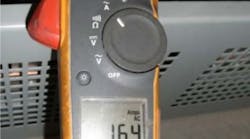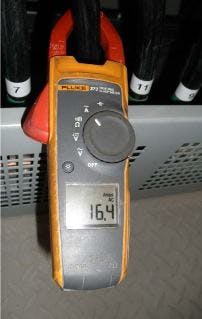During the course of an ongoing audit in October 2015 of the Bureau of Overseas Buildings Operations' construction and commissioning of a new office and residential apartment building at the U.S. Embassy in Kabul, Afghanistan, the Office of Inspector General and the U.S. Army Corps of Engineers identified life, health, and safety risks to building occupants due to a type of hazardous electrical current — known as objectionable current — in both the office and apartment building.
Specifically, OIG and the USACE team, which included master electricians from Task Force Protect Our Warfighters and Electrical Resources, discovered objectionable currents measuring up to 16.7A in the New Office Annex building (NOX) and up to 27A in the residential apartment building (SDA-1). Objectionable current is defined as electrical current occurring on the ground wiring of a building. Although the National Electrical Code (NEC) does not establish a life safety threshold for objectionable current, Task Force POWER considers any objectionable current a risk to life and safety.
The most common causes of objectionable current are improperly installed electrical wiring, equipment, and faulty electrical appliances.
OIG is recommending that the Embassy in Kabul, in coordination with OBO, take immediate action to:
- examine the installation of electrical wiring, equipment, and appliances in the NOX and SDA-1 to ascertain the cause for the objectionable current.
- determine what mitigation measures can be immediately taken to eliminate or reduce risk to personnel occupying the buildings
- to the extent necessary, inform residents of the existence of objectionable current and the risks associated with it, and provide instructions on how to eliminate or avoid accompanying hazards.
OIG considers Recommendation No. 1 resolved, pending further action, and Recommendations No. 2 and No. 3 unresolved.
The two buildings are part of a major office and residential expansion at the Embassy in Kabul scheduled to be completed in Fall 2017 at a cost of nearly $800 million. Embassy personnel began occupying the NOX in July 2015, and residents began moving into the SDA-1 apartments in February 2016.
Based on its inspection, Task Force POWER’s initial observation is that improperly installed wiring is the likely cause of the objectionable current in both buildings and found evidence of an improper neutral and ground bond in at least one panel. Given the levels of objectionable current identified in both buildings. Task Force POWER believes that other improper connections — which electricians refer to as neutral-to-ground or neutral-to-case bonds — exist but have yet to be located.




